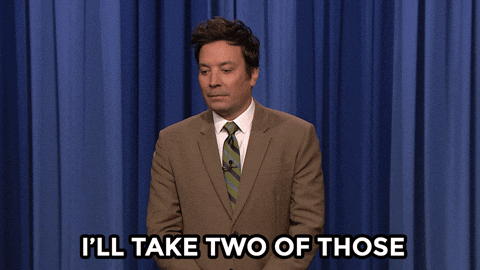- CAPTIVATED 🧠💰
- Posts
- Why do we fall for LIMITED TIME OFFERS?
Why do we fall for LIMITED TIME OFFERS?
How to crack the psychology that makes us spend more

You’re scrolling, and suddenly you see “Only 3 left in stock!”—and just like that, you’re rushing to checkout. You weren’t even thinking about buying it, but now it feels like you can’t miss out.

If you’ve ever felt that rush to buy something because the sale is about to end? That’s no accident. Let’s get into the consumer psychology of why those limited-time offers work so well—and how you can use them to grow your own sales.
| Special thanks to our partners on today’s issue, 1440 |
Today’s Issue: Why do we Fall for Limited Time Offers: How to Crack the Psychology that Makes us Spend More
🧠 The Pain: Why We Fall for It
You’ve probably had that moment—your phone buzzes with a ‘24-hour flash sale,’ and suddenly you’re scrambling to buy something you didn’t even know you wanted. It’s annoying because, deep down, you know you’re being pushed to make a decision too quickly.
This is a classic case of scarcity psychology. When something is only available for a short time or in limited quantities, your brain automatically assigns it more value. The idea of missing out drives you to act fast—sometimes too fast.

Your brain hates losing out—especially on something that feels rare. That fear of missing out, also known as FOMO, kicks your decision-making into overdrive.
You’re more likely to buy because it feels like a once-in-a-lifetime chance, even when it’s not.
It’s rooted in a psychology principle called scarcity bias. When opportunities or items are limited, they seem more valuable. Your brain starts screaming, "I might miss this!" which is why those ticking clocks or 'only 5 left' labels push you to act.
Here’s the kicker: it’s not just about FOMO. The rush to buy is reinforced by urgency, which taps into a deeper part of our brain—the same part that’s wired to make quick decisions when resources are scarce. The result? You’re buying now and thinking later.
💸 Keeping the Coins as a Consumer: How to Outsmart FOMO in Everyday Life
Next time you’re hit with a limited-time offer: hit pause.
Take a moment to ask yourself if you’re really in love with that product or just hooked by the deadline. If it’s the latter, walk away. Chances are, you’ll see that “deal” pop up again in a week or two.
Another smart move: Add items to your cart and just let them sit there. If the offer is legit, you’ll still have time to make a smart decision.
Look for the Pattern
Next time you see a limited-time offer, take a quick look at your inbox or the brand’s social media. Do they run these "exclusive" sales every month? If so, that’s a sign it’s not as limited as it seems. SO MANY brands do this — look for the patterns.
Recognizing these patterns helps you avoid the pressure to buy right away and gives you time to decide if it’s something you truly need, or just caught up in the moment.
💰️ Flip it: How to Use This for More Sales and Bigger Orders
Now, here’s the fun part. If this works on you as a consumer, you can use this same psychology to grow your sales or sell more products and services.
Scarcity creates urgency that helps people take action when they’re already on the fence. Done right, it can drive serious results. Here’s some ways you can apply it:
1. Set Real Deadlines
Use real, short-term sales windows (like 48-hour flash sales) to create urgency. But make sure you actually stick to the deadline to build credibility with your customers and help these tactics work even better over time. (Don’t be the brand that’s always running the same ole sales every few weeks, it’ll kill your customers’ trust in your brand).
2. Limited Quantity for Big Demand
Mention a specific number of items left, like “Only 3 left!” or “Just 10 in stock!” The magic here is the feeling of scarcity. But don’t overdo it—if every product is “low stock,” your customers might stop believing you.
3. Reward Early Birds
Give something extra to those who act fast. Think about exclusive perks like a freebie, early access to a new product, or a special discount. Rewarding quick decision-makers creates that "must-have" energy and encourages faster conversions
The Bottomline Bites
This approach taps into the power of scarcity and urgency—two core consumer psychology principles that can help you get inside the mind of your customers and guide them toward action.
When you make a product feel limited or time-sensitive, customers are more likely to make decisions quickly, feeling confident they’re getting something valuable.
Using urgency in the right way makes it easier for them to make decisions that feel good, while increasing your sales at the same time.
Ready to try it out? Start with real deadlines for limited-time offers, test low stock alerts, and reward those who act fast. These small tweaks can lead to big results.
| Special thanks to our partners on today’s issue, 1440 |
News for humans, by humans.
Today's news.
Edited to be unbiased as humanly possible.
Every morning, we triple-check headlines, stories, and sources for bias.
All by hand with no algorithms.
Stay tuned for more tips that keep your audience and customers captivated using the psychology of spending and selling and consumer behavior. I’m here to help you sell smarter, make more, and grow your products and business the smart, simple way.
If you like videos, check out the latest on the YouTube channel >.
Stay great, captivate, and sell smarter! 🧠💰️
👋 Until next time,
Profit Nic